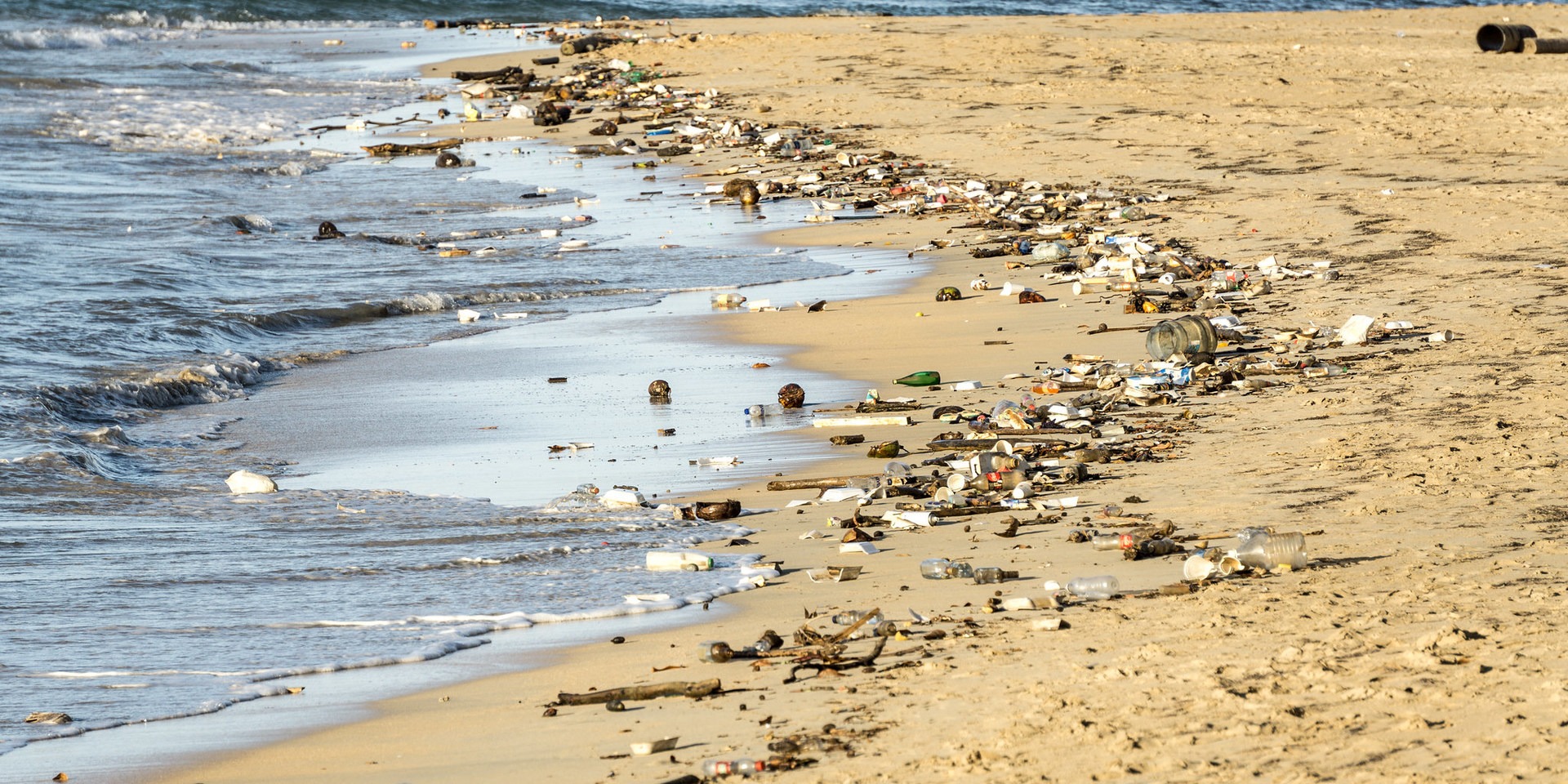You are here
Let’s talk plastic.
I finally made it to an Earth Day clean-up activity this year. After being handed a biodegradable trash bag (more on that in a minute), our group spread out across a random stretch of woodlands and began to clean. About 90% of my haul was single-use plastic—bags, wrappers, bottles, straws, and caps.
Plastics have rightfully taken center stage as the poster child of harmful waste for the sake of convenient consumerism. It’s so pervasive and woven into our lifestyle; it takes serious effort to quantify just how much single-use plastic we use every single day.
Too much plastic ultimately ends up in the ocean. About a garbage truck load per second. According to the Ocean Conservancy, 8 million metric tons of plastic enter our oceans annually. The ocean and its direct inhabitants aren't the only ones at risk: as it breaks up, plastic particulates enter the food chain.
Bottom line: Plastic pollution is a big deal, and anything you can do is going to help. Here’s your action list.
Adopt the Right Attitude
Attitude matters. Tackle your plastic use with a positive, can-do approach, and you’ll be more open to changing old habits and finding new solutions. Don’t be that person who complains about infringing upon your right to free plastic grocery bags when your city wants to ban them.
Prioritize the Reduce Reuse Recycle
The three R’s are the holy trinity of consumer responsibility and probably the most misunderstood. They are triaged with recycling as the last best option. Here’s why: The United States exports most of its recycled plastic waste overseas, the stuff we’re diligently putting in our curbside recycling bins. China was the biggest recipient, and it recently stopped accepting imported plastic garbage. Much of the “recycled” low-grade plastic (our grocery bags, food wrappers, and those plastic straws) ends up being incinerated or sent to landfills and dumps that host unfathomably large trash-scapes. A lot of it ends up in the waterways.
Instead of recycling, focus on reducing what you use. What you do use, figure out a way to reuse it. Old toothbrushes become nimble scrubbers. Ziploc bags and bread bags are washed, dried, and reused. Finally, only the old, tired, unserviceable plastic should go to the recycler.
Make It Real
Have you recently checked the marketplace for alternatives to single-use plastics? You’ll be surprised at what you find. Here are 10 suggestions:
- Garbage bags. You don’t have to give them up, just switch to a decomposing version. They feel flimsy, but they are sturdy enough. Just don’t expect to stuff them as much as traditional bags. Instead, here’s an opportunity to boost your steps with a few extra trips to the dumpster. Good training for that next adventure!
- Single-use grocery bags. Put a stockpile of spare, reusable bags in your vehicles (string backpacks work too). Side note: the most energy-efficient reusables are the plastic ones made of polypropylene. The worst offenders are of organic cotton.
- Sandwich bags. You can purchase reusables that are capable of being boiled, frozen, and put in the dishwasher.
- Plastic Wrap. Try using waxed cloth or silicon wrap for wrapping sandwiches or covering leftovers. Wax paper is another alternative.
- Toiletries. Swap single-use razors for reusable. Try a bamboo toothbrush or a plastic toothbrush that swaps the brush portion while reusing the handle. Choosing a post-consumer recycled toothbrush helps strengthen the market for recycled plastic. Opt for dental floss packaged and refilled in glass instead of plastic. Toothpaste can be purchased in tablet form. There are also increasingly high-quality shampoos and shower gels that can be purchased as solid bars.
- Water bottles. C’mon, you’re not still using plastic water bottles, are you?
- Produce bags. There are small, netted bags made specifically for bundling up your produce at the grocery store.
- Pet poop bags. Make sure your bags are a decomposing version.
- Straws. It takes practice to remember to say “no thank you” to the ubiquitous plastic straw that comes with every drink. Think about this poor guy (be advised: graphic content), and suddenly you’ll be remembering every time.
- Plasticware (plates, cups, forks, knives, spoons). Get sturdy enough materials that you can wash and reuse, choose decomposing plasticware, or hit up Goodwill and purchase the real deal that you can reuse.
Expand Your Resources
It’s inevitable that you will still have to contend with plastic garbage. Increase the chances of having it truly recycled by making sure it meets your municipality’s guidelines. Common practices include cleaning food residue and removing loose plastic bags.
You can recycle plastic bags and film (e.g. dry-cleaner bags, shipping envelopes, Zip-top food storage, any bag with the How2Recycle label). Go to PlasticFilmsRecycling.org to find a drop spot and learn more. Another excellent resource is TerraCycle.com. The company makes arrangements with retailers for brand-specific packaging (e.g. Tom’s of Maine and Colgate) and many other categories of plastic. You can even earn money for charity or points for products.
Keep It Up
Ultimately, anything you can do is going to be helpful. Applaud your efforts and keep up the good fight. As participants in outdoor, trail-loving activities, we carry an even greater responsibility to take care of playgrounds that we love and share.





Comments
Sign In and share them.